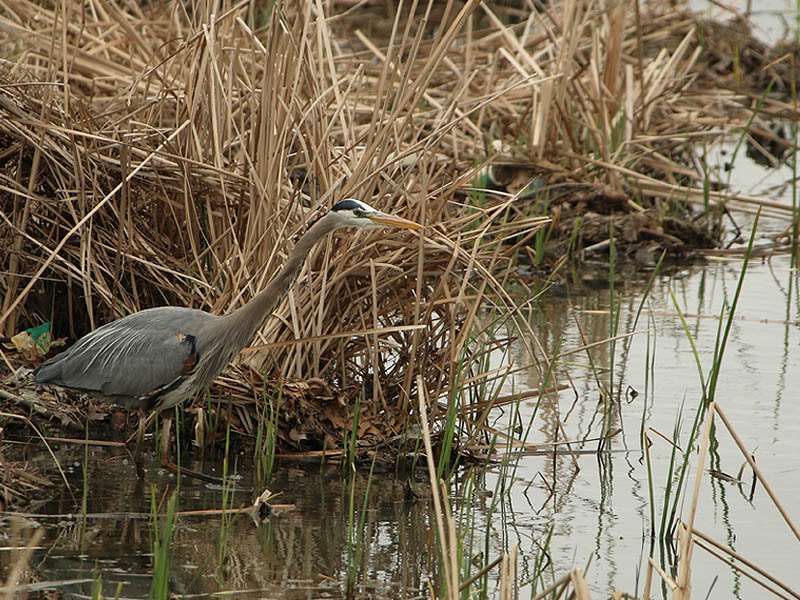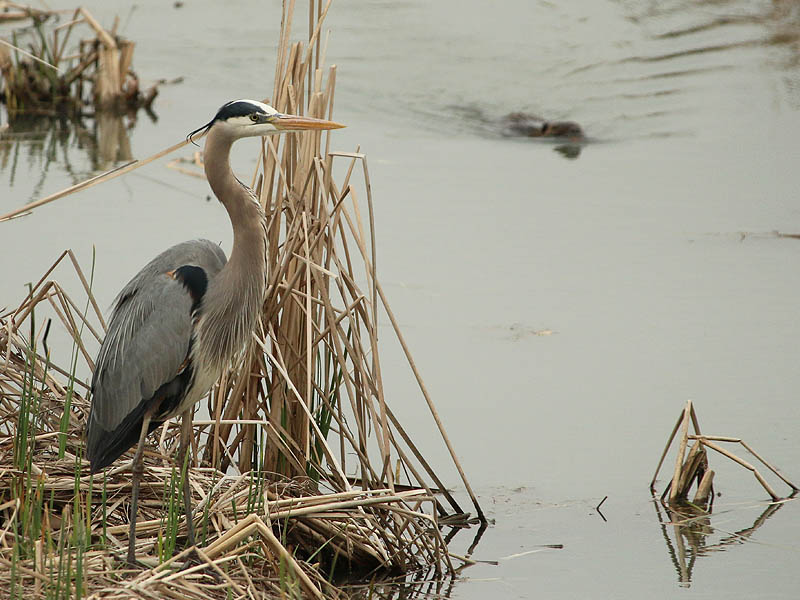This regal Great Blue Heron was busy stalking through the reeds when we came across him. The channel of water that he was patrolling was very active with a wide variety of aquatic wildlife. Fish and turtles were evident,and at one point a large Nutria even came swimming by (see picture number three below).
Here is what Wikipedia has to say about the Great Blue Heron’s feeding habits:
The primary food for great blue heron is small fish, though it is also known to opportunistically feed on a wide range of shrimp, crabs, aquatic insects, rodents and other small mammals, amphibians, reptiles, and small birds. Primary prey is variable based on availability and abundance. In Nova Scotia, 98% of the diet was flounders. In British Columbia, the primary prey species are sticklebacks, gunnels, sculpins and perch. Californian herons were found to live mostly on sculpin, bass, perch, flounder and top smelt . Non-piscivore prey is rarely quantitatively important, though one study in Idaho showed that from 24 to 40% of the diet was made up of voles.
Herons locate their food by sight and usually swallow it whole. Herons have been known to choke on prey that is too large. It is generally a solitary feeder. Individuals usually forage while standing in water but will also feed in fields or drop from the air, or a perch, into water. Mice are occasionally predated in upland areas far from the species’ typical aquatic environment. Occasionally loose feeding flocks form and may be beneficial since they are able to locate schools of fish more easily.[18] As large wading birds, great blue herons are capable of feeding in deeper waters and thus are able to harvest from niche areas not open to most other heron species. Typically, the great blue heron feeds in shallow waters, usually less than 50 cm (20 in) deep, or at the water’s edge during both the night and the day, but especially around dawn and dusk. The most commonly employed hunting technique of the species is wading slowly with its long legs through shallow water and quickly spearing fish or frogs with its long, sharp bill. Although usually ponderous in movements, the great blue heron is adaptable in its fishing methods. Feeding behaviors variably have consisted of standing in one place, probing, pecking, walking at slow speeds, moving quickly, flying short distances and alighting, hovering over water and picking up prey, diving headfirst into the water, alighting on water feet-first, jumping from perches feet-first, and swimming or floating on the surface of the water.





